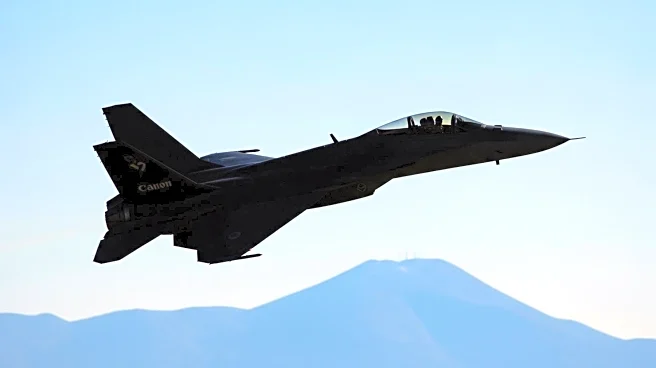What's Happening?
The International Energy Agency (IEA) has significantly increased its crude oil supply forecast following OPEC+'s decision to reverse oil production cuts. This decision is expected to result in an oil surplus averaging 2.3 million barrels per day (mbpd) during the second half of 2025 and 3.0 mbpd during 2026, peaking at 4.1 mbpd in the first quarter of 2026. The U.S. Energy Information Administration (EIA) forecasts that this surplus could drive the price of Brent crude oil down to an average of USD 63 per barrel during the second half of 2025 and USD 51 per barrel during 2026. Despite the potential for lower oil prices to boost demand, the tanker market faces challenges due to increased supply growth and shorter sailing distances, which have negatively impacted year-on-year demand growth and rates.
Why It's Important?
The anticipated oil surplus and subsequent price drop have significant implications for the U.S. tanker market. Lower oil prices may encourage stock building, increasing demand for tankers. However, the product tanker market is expected to remain weaker than in 2024 due to high supply growth and reduced demand growth. Shorter sailing distances, influenced by routing changes such as increased use of the Suez Canal, further complicate the market dynamics. These factors could lead to a challenging environment for U.S. tanker operators, affecting profitability and strategic planning.
What's Next?
The tanker market may see improved demand in the latter half of 2025, but product tanker rates and prices could still lag behind 2024 levels. The ongoing peace negotiations between Russia and Ukraine could potentially normalize trade with Russia, affecting global trade patterns and sailing distances. If successful, these negotiations might lead to a return to pre-war trade routes, impacting demand growth and market conditions. Stakeholders in the U.S. tanker industry will need to monitor these developments closely to adapt their strategies accordingly.
Beyond the Headlines
The shift in global oil supply and demand dynamics highlights the interconnectedness of geopolitical events and economic markets. The potential normalization of trade with Russia could have broader implications for international relations and economic stability. Additionally, the reliance on specific trade routes underscores the importance of geopolitical stability in maintaining efficient global supply chains.












